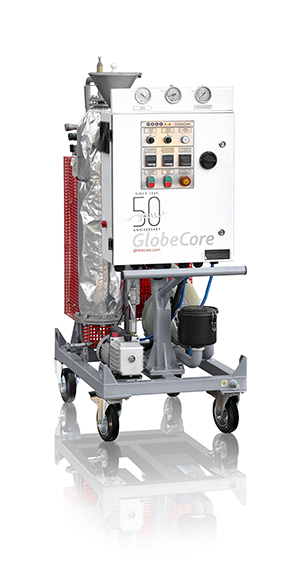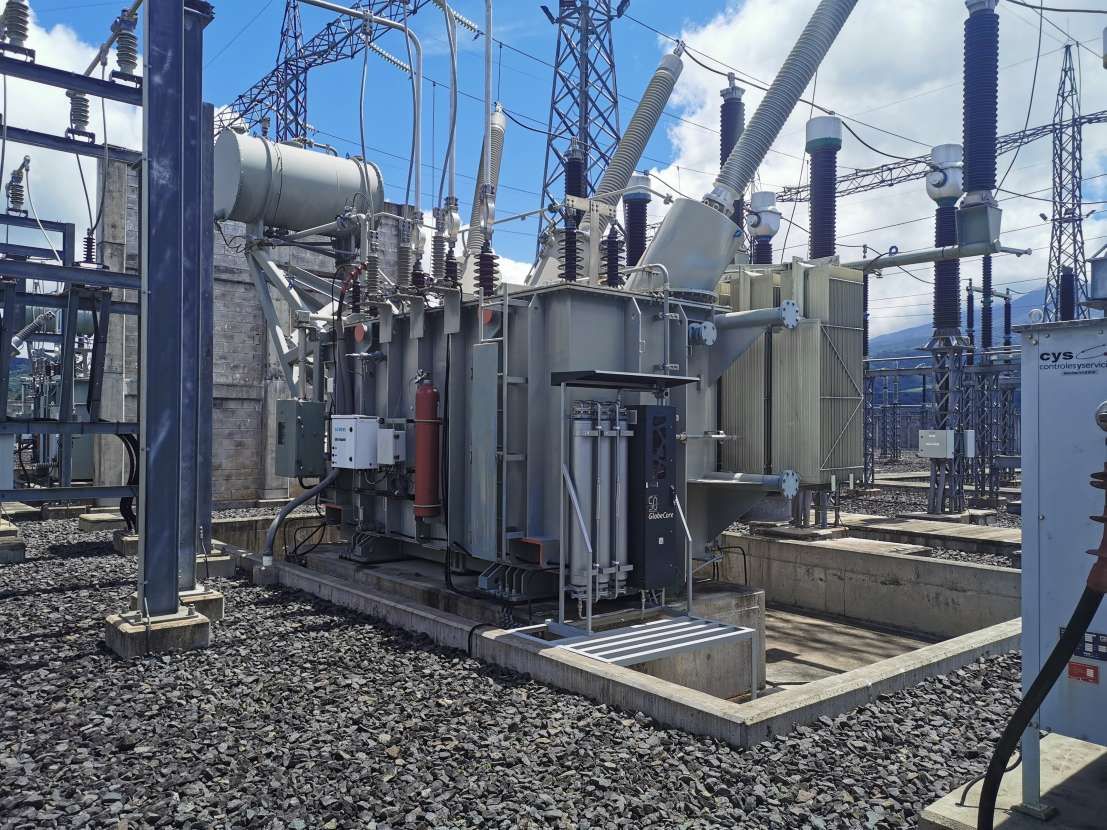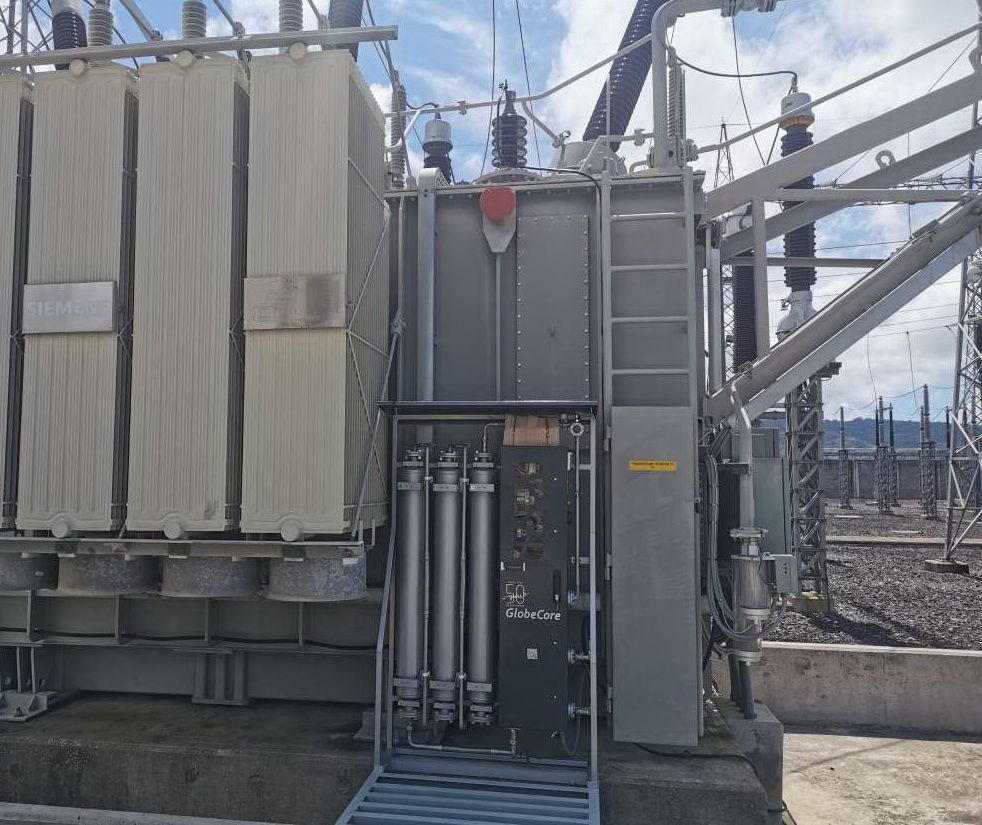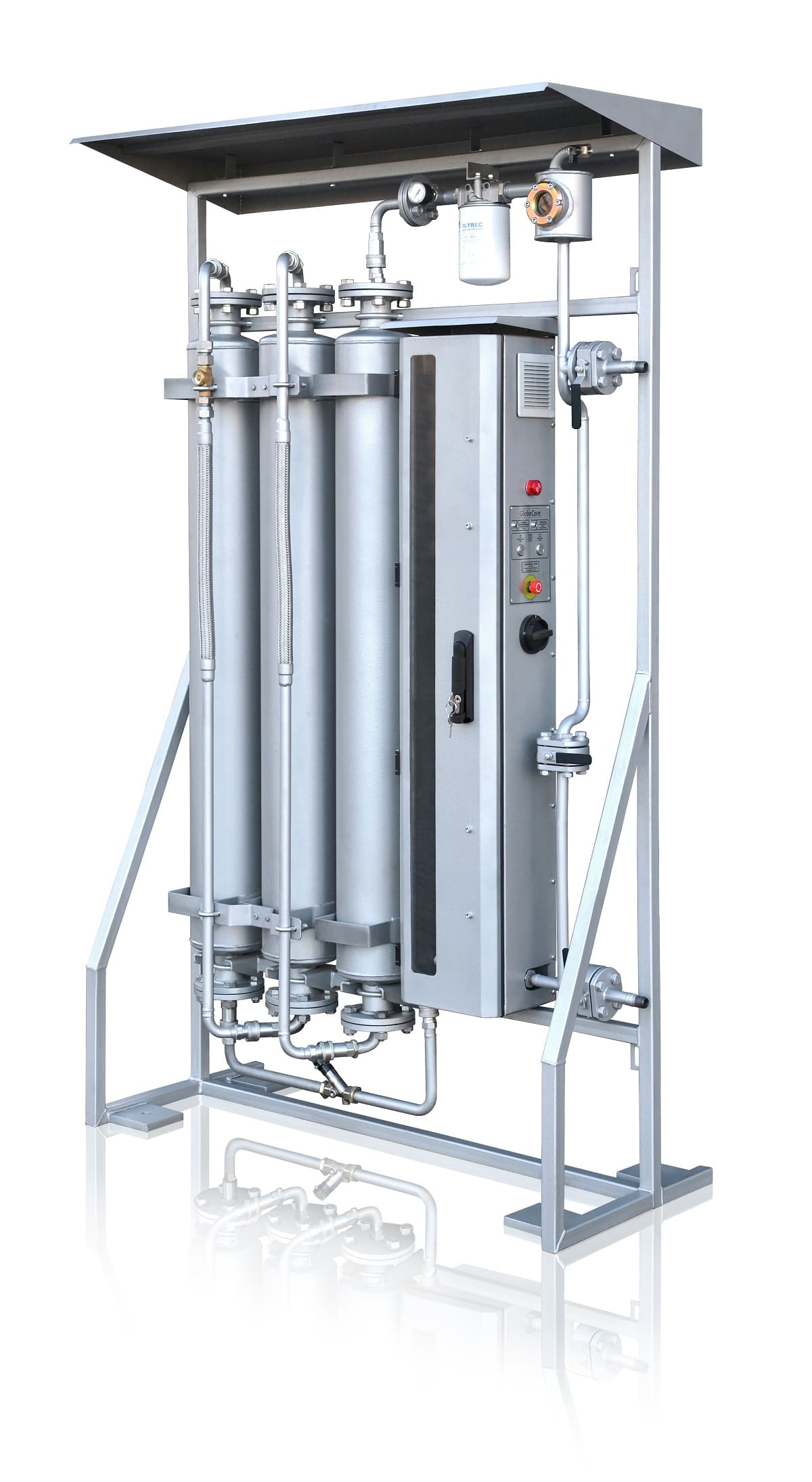Transformers, the linchpins of our electrical infrastructure, are vital for the seamless transmission and distribution of electricity. However, their efficiency and lifespan can be compromised by a seemingly harmless element: moisture.
Moisture within a transformer can result from various sources – be it residual moisture post-manufacturing, ambient humidity, or operational conditions. When this moisture interacts with the transformer’s insulation system, particularly its paper insulation, it can induce a plethora of issues ranging from decreased dielectric strength to accelerated aging of the insulation.
Dangers of Moisture for Transformers
The ramifications of moisture intrusion into transformers are multifaceted and consequential.
Impact on Transformer Oil:
Transformer oil, apart from its cooling function, acts as an insulating medium and needed for maintaining the dielectric strength between internal components. However, with the presence of water, this dielectric strength is notably diminished. The heightened electrical conductivity caused by moisture can expedite the degradation of the oil, altering its chemical properties. Over time, this can lead to the formation of corrosive by-products that can wreak havoc on a transformer’s internals.
Moreover, water-saturated oil struggles to effectively dissipate heat generated within the transformer. This inefficiency in heat dissipation can lead to overheating issues, which further endangers the equipment’s functionality and longevity.
Moisture in Solid Insulation:
Solid insulation, typically composed of materials like cellulose (paper), is essential in maintaining electrical separation within transformer windings. However, when moisture infiltrates this insulation, a series of concerning events unfold. Firstly, the dielectric strength of the insulation is compromised, increasing the risk of internal electrical discharges. These discharges can then lead to localized heating and eventual insulation breakdown.
Furthermore, moisture acts as a catalyst for the aging process of solid insulation. Wet insulation degrades faster than dry insulation, and the by-products of this degradation can further contaminate the transformer oil, creating a cyclical problem.
Existing Transformer Drying Methods
Recognizing moisture as a perennial adversary in the safe and efficient operation of transformers, various drying techniques have been developed to mitigate its detrimental effects. Some methods have been in use for decades, while others are the result of recent technological advancements.
Hot Oil Circulation:
By heating and recirculating transformer oil, this method aims to drive out the dissolved moisture. While it is effective, it also demands substantial downtime, making it less favorable for transformers critical to power continuity. Furthermore, the method’s efficacy is contingent on the meticulous circulation of oil, ensuring that all areas are adequately treated.
Vacuum Drying:
This process involves creating a vacuum within the transformer, which subsequently promotes the evaporation of moisture from both the oil and solid insulation. While the approach is thorough and efficient, it necessitates specialized equipment. Moreover, the process duration can be prolonged, especially for transformers with substantial moisture infiltration.
Thermal Drying:
By subjecting the transformer to controlled heating, this technique exploits the principle that moisture evaporates at elevated temperatures. This method is suitable for transformers that can tolerate the thermal stress. While effective, it’s essential to monitor temperature levels closely to avoid any potential damage.
Each method, with its unique strengths and limitations, offers varying degrees of appropriateness based on the specific circumstances of the transformer in question.
CMM-260C: GlobeCore’s Online Transformer Dry-Out Systems
Having established the importance of maintaining moisture levels in transformers, and having discussed traditional methods of addressing this concern, it’s time to introduce a solution: GlobeCore‘s CMM-260C Online Transformer Dry-Out System. Designed for integration into existing transformer setups, this system offers a continuous, efficient, and automated way to remove moisture from transformer oil, thereby optimizing the internal conditions for the transformer’s long-term operation and reliability.
Once connected to a transformer, the Online Transformer Dry-Out System consistently circulates the transformer oil through a microporous granular sorbent. This sorbent, owing to its microscopic pores, exhibits an exceptional affinity for moisture. As the transformer oil navigates this medium, water molecules are swiftly absorbed, becoming securely trapped within the sorbent’s crystalline structure. This ensures that the oil returning to the transformer is notably drier, thus maintaining an environment less conducive to moisture-related issues.
Design Advantages:
Compactness: Given the constraints in substation environments or industrial setups, the CMM-260C is designed to be compact. This ensures it integrates seamlessly without imposing spatial challenges.
Zeolite Sorbent Efficiency: Central to the CMM-260C’s efficacy is its use of zeolites. These microporous minerals have demonstrated unparalleled efficiency in moisture absorption.
Continuous Operation: Perhaps the most pivotal advantage of the CMM-260C is its online functionality. Unlike traditional methods which often necessitate substantial transformer downtime, the CMM-260C operates in tandem with the transformer. This continuous operation ensures that transformers are persistently guarded against moisture, without interruption to their primary function of power distribution.
Combination with Zeolite Regeneration System

The BRPS plant stands out for its design tailored for the rejuvenation of moisture-laden sorbents. It focuses on meticulously extracting oil residues from the zeolite using overheated steam. This pre-conditioning is vital, given that these residues can have flash points much lower than the temperature required for zeolite regeneration. Post this oil removal, the zeolite undergoes a drying phase, facilitated by hot air heated up to a temperature of 250°C. To ensure a thorough purge of all remnants, the final phase encompasses vacuuming the zeolite-loaded equipment to eliminate remaining steam and gas mixtures. The result? A refreshed zeolite, primed to resume its vital role in moisture absorption.
Benefits of Using the Regeneration System Alongside the Drying Unit
The marriage of the Online Transformer Dry-Out System CMM-260C with the BRPS doesn’t just bring about operational enhancements; it brings forth tangible economic and ecological benefits:
- Economic Efficiency: By enabling zeolite regeneration on-site, transformer operators are spared the recurring costs associated with cartridge replacements. No longer is there a need to procure, transport, and integrate new sorbent cartridges continually.
- Eco-Friendly Operation: Traditionally, the replacement of exhausted sorbents was associated with the loss of up to 20% of the contaminated sorbent, which posed environmental hazards. The on-site regeneration mitigates this wastage, safeguarding the environment from potential contamination. The combination with the regeneration block obviates the need for sorbent disposal, thus saving costs associated with waste handling and ensuring compliance with environmental regulations.
- Flexibility and Portability: The BRPS’s small footprint allows it to be brought near the transformer only when needed for timely maintenance. This ensures that the drying system has minimal interruptions during the phases of sorbent, specifically zeolite, regeneration.
Operating Online Transformer Dry-Out System CMM-260C at our clients in Latin America.
Advantages of the CMM-260C Online Transformer Dry-Out System by GlobeCore
In the modern landscape of power infrastructure management, the CMM-260C emerges as a paragon of design and functionality. Diving into its multitude of advantages:
- Continuous Performance: One of its most defining features is the system’s ability to operate in tandem with transformers, ensuring uninterrupted power delivery while concurrently managing moisture.
- All-Encompassing Drying: Beyond just addressing oil moisture, the CMM-260C extends its drying prowess to the transformer insulation, thereby offering comprehensive protection.
- Economical Operations: The regeneration system negates frequent cartridge replacements, leading to substantial cost savings in the long run.
- Sustainability Focus: By enabling on-site zeolite regeneration, the system diminishes environmental risks associated with sorbent disposal and potential contamination.
- Optimized Resource Utilization: The reuse of sorbents not only reduces operational expenses but also underscores the equipment’s commitment to resource conservation.
The convergence of the CMM-260C Online Transformer Dry-Out System with the BRPS Zeolite Regeneration Block epitomizes a holistic approach to transformer moisture management. By addressing not just the challenge of moisture absorption but also the subsequent sorbent rejuvenation, this integrated system underscores GlobeCore‘s vision of sustainable, efficient, and environmentally-conscious transformer maintenance. For stakeholders in the power infrastructure domain, this pairing offers a robust solution that promises operational excellence, cost savings, and a reduced environmental footprint.



 BRPS Zeolite Regeneration ...
BRPS Zeolite Regeneration ... CMM-260C Online Transformer ...
CMM-260C Online Transformer ...